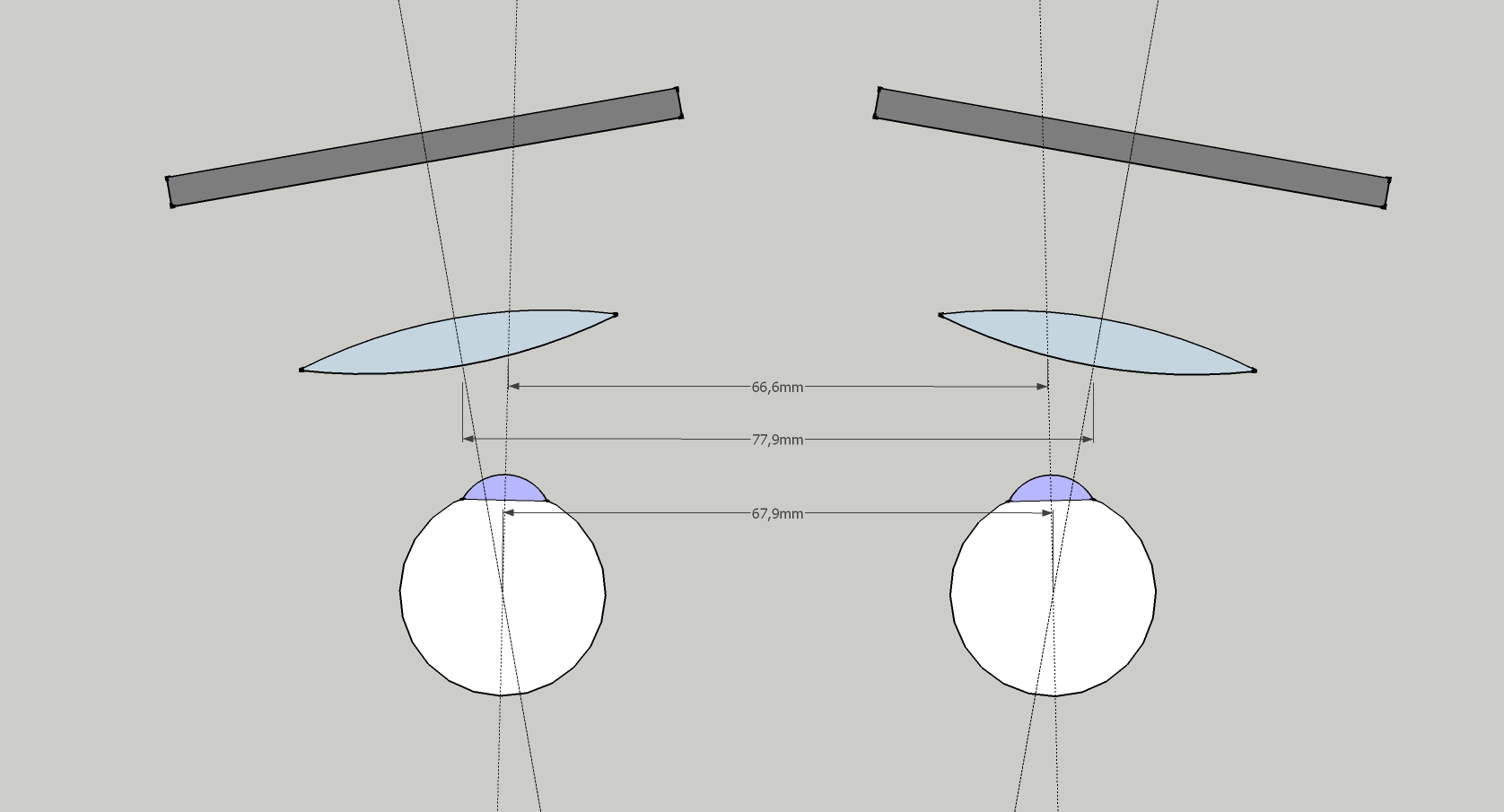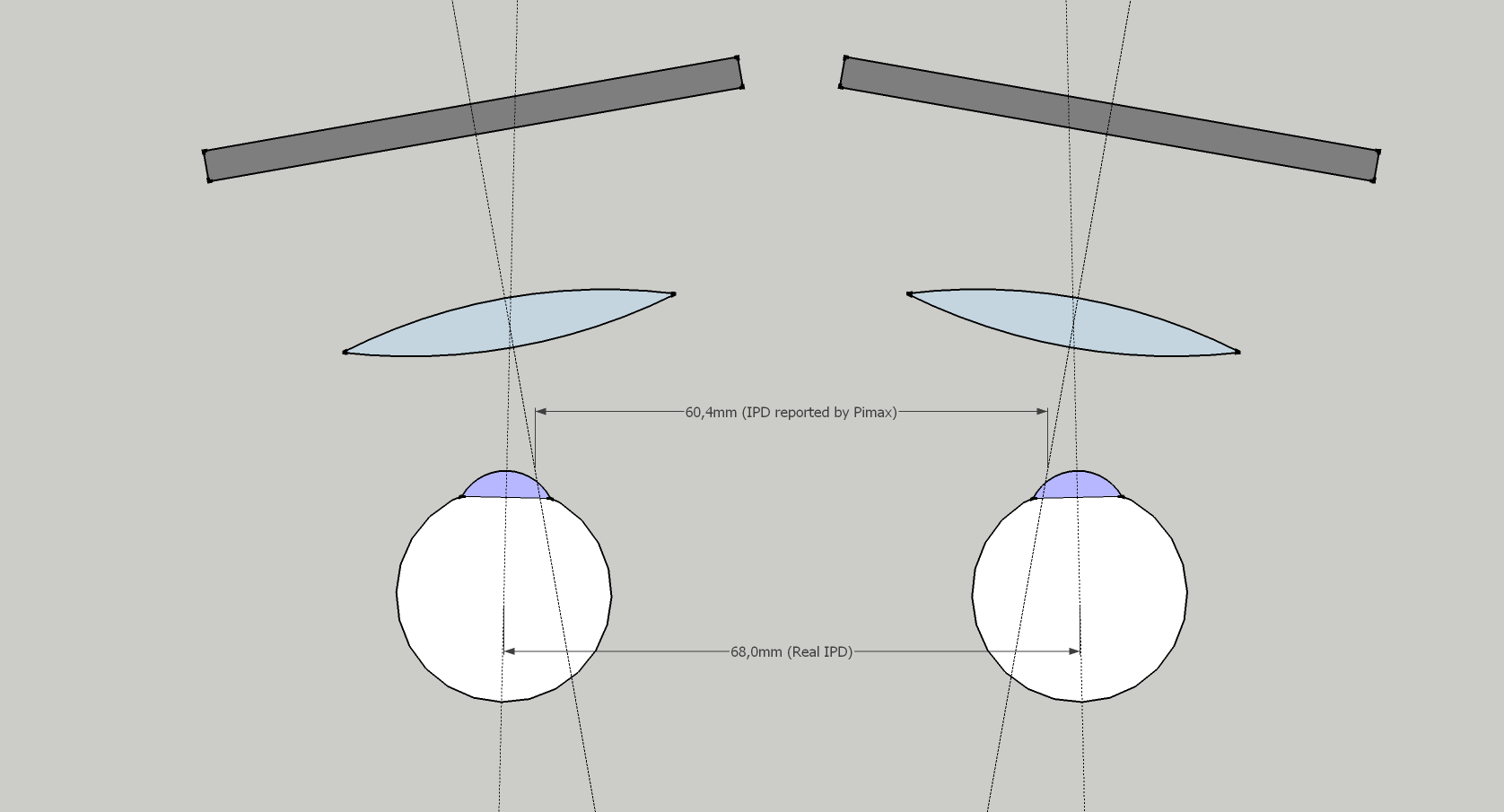Quite a lot of users made an observation that when they set their IPD setting in Pimax using the method of “getting images in both eyes sharp at the same time, while focusing on the distant object”, the reported IPD by the HMD is actually significantly smaller than what is their real IPD.
Some started to believe that this is because “Pimax requires using Near IPD”. Just for the sake of understanding, let’s assume that by Near IPD I understand the interpupillary distance of the eyes when they are in the reading mode i.e. focusing on objects which are in reading distance. As reading distance is relatively short (~40 cm) the convergent nature of the reading look makes the eye pupils closer to each other (because the look has significant convergence). So the consequence is that Near IPD is shorter than the “normal IPD” (which some called “distant”).
While this is true, it has nothing to do with Pimax, because in VR, the environments and the objects, which are rendered in the virtual space, are very seldom viewed (and thus rendered) at the reading distance. In fact the VR guidelines suggests that things like UI should be rendered at 1-3 meters (closer to focal distance) to avoid some discomfort which comes from disparity of the focal distance and the virtual distance.
On the other hand in VR, while the objects cannot preserve their focal distance from the real world (as this one is fixed by the HMD design), they can still preserve the convergence property of the view. In other words, if my HMD is set up correctly and I look at something 3 virtual meters in front me, my eyes should converge in the exactly same way as they would if I was looking at the real object 3 real meters in front of me. This is ensured by setting correctly the rendering views for each eye in OpenVR.
I have already posted a long story on IPD and Pimax optics here Some thoughts on the IPD discrepancy, so I will just reiterate some results here (for more detail, read my original post).
The Pimax optics is set this way:
I drew the eyes this way just to give an idea how the different distances change along the optical axes, but of course you are not supposed to look into Pimax this way. You can however note that in order to align lenses with the eyes the distance between lenses centers must be higher than the IPD (which is 68 mm for the diagram). [On the side note, the eye size is supposed to be scale accurate, the distance of the lenses (and the panels) from the eye is arbitrary - they are probably closer to the eye, but I did not want to clutter the image]
When we look at things in Pimax, we are looking at them this way:
Notice the slightly convergent look (in fact the eyes converge at the point which 1,5 m away and which is at the correct scale), but then this way they no longer look through the lenses centers, but through the lenses peripheral ring. This makes the image slightly unclear, because it suffers the distortion.
People however noticed that and started to decrease the IPD setting using the method described above (getting images in both eyes sharp at the same time, while focusing on the distant object), which led them to this:
In this configuration the eyes are still focusing on the point 1,5 m away, but lenses are adjusted in a way that the eye optical axes align with lenses centers, which should give the clearest picture in both eyes. Also note what would the HMD report in this case as an IPD. 60,4 mm is much lower than 68 mm which is the nominal value, but the difference does not stem from the near vs far IPD, but from the optical design of the Pimax (divergent views).
The problem of this setting, while it may help with focusing the image, is that it screws up the angular fidelity of the stereo views, because the views are in the application rendered with divergent views (at 10° angular offset) but they are observed dead ahead at the different angle and through the lenses which are now tilted.
I hope I made it clear that the discrepancy in the IPD many observe when they try to set it by using the aforementioned method has nothing to do with the “near IPD” and while it may work for some it is definitely not a universal solution.



 . Normally, you do not need to adjust IPD based on the distance, the difference in the IPD caused by the different convergence is not so big (unless you look at something really close) that the eyes cannot accommodate it.
. Normally, you do not need to adjust IPD based on the distance, the difference in the IPD caused by the different convergence is not so big (unless you look at something really close) that the eyes cannot accommodate it. .
.